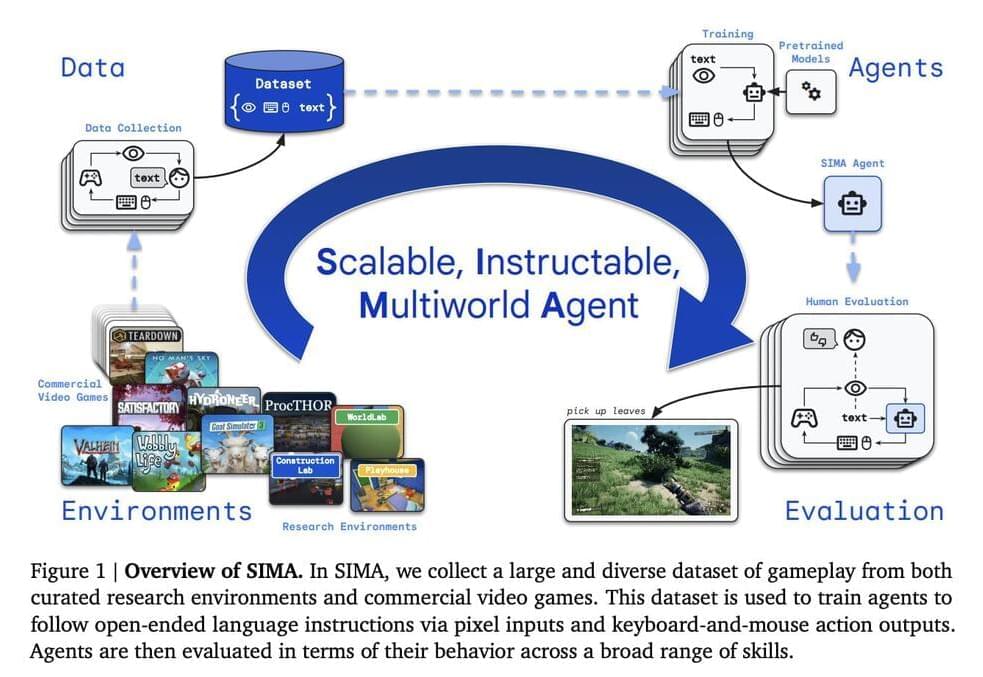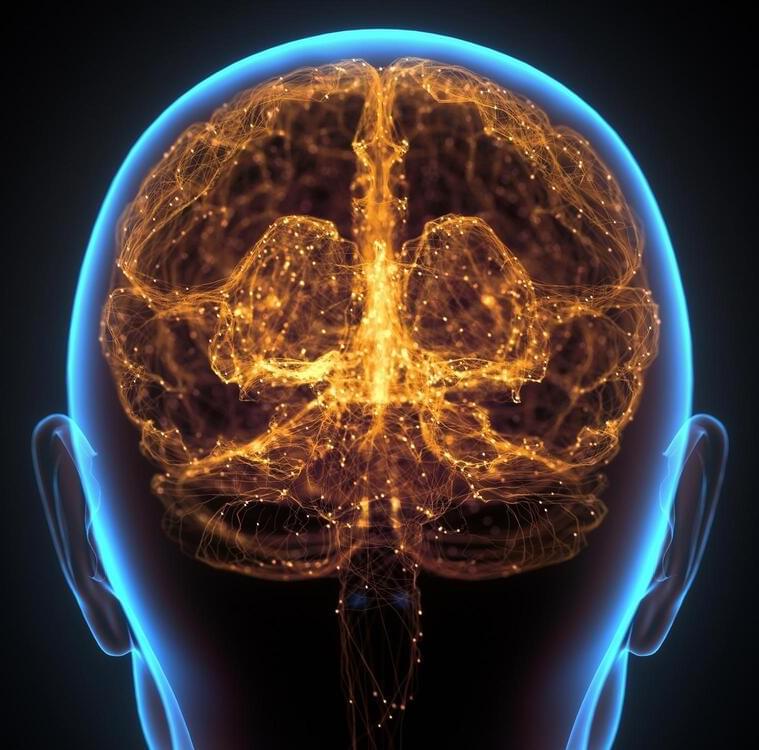67 likes, — edguerrero3 on March 19, 2024.



The use of artificial intelligence in the development of video games has been met with both excitement and dread.
According to a recent industry report by game engine developer Unity, studios are already using AI to save time and boost productivity by whipping up assets and code.
But given enough time, the video games of the future could soon be entirely created with the use of AI — maybe even within just ten years, according to Nvidia CEO Jensen Huang, the man behind a company that’s greatly benefitting from selling thousands of graphics processing units (GPUs) to some of the biggest players in the AI industry.

Using artificial intelligence, researchers have discovered mysterious “fairy circles” in hundreds of locations across the globe.
These unusual round vegetation patterns have long puzzled experts, dotting the landscapes in the Namib Desert and the Australian outback.
But according to a new study published in the journal Proceedings of the National Academy of Sciences, the unusual phenomenon could be far more widespread than previously thought, cracking the case wide open and raising plenty more questions than answers.

https://huggingface.co/papers/2403.
We introduce bounded generation as a generalized task to control video generation to synthesize arbitrary camera and subject motion based only on a given start and end frame.
Join the discussion on this paper page.

😗😁😘 agi yay 😀 😍
The pursuit of artificial intelligence that can navigate and comprehend the intricacies of three-dimensional environments with the ease and adaptability of humans has long been a frontier in technology. At the heart of this exploration is the ambition to create AI agents that not only perceive their surroundings but also follow complex instructions articulated in the language of their human creators. Researchers are pushing the boundaries of what AI can achieve by bridging the gap between abstract verbal commands and concrete actions within digital worlds.
Researchers from Google DeepMind and the University of British Columbia focus on a groundbreaking AI framework, the Scalable, Instructable, Multiworld Agent (SIMA). This framework is not just another AI tool but a unique system designed to train AI agents in diverse simulated 3D environments, from meticulously designed research labs to the expansive realms of commercial video games. Its universal applicability sets SIMA apart, enabling it to understand and act upon instructions in any virtual setting, a feature that could revolutionize how everyone interacts with AI.
Creating a versatile AI that can interpret and act on instructions in natural language is no small feat. Earlier AI systems were trained in specific environments, which limits their usefulness in new situations. This is where SIMA steps in with its innovative approach. Training in various virtual settings allows SIMA to understand and execute multiple tasks, linking linguistic instructions with appropriate actions. This enhances its adaptability and deepens its understanding of language in the context of different 3D spaces, a significant step forward in AI development.

FCC cracks down on retailers like Amazon allegedly selling illegal signal jammers. Investigations are underway.
Uh-oh, Amazon. Looks like the Federal Communications Commission (FCC) is not playing around when it comes to selling illegal signal jammers. The agency just went public with an investigation into Amazon and other major retailers for allegedly pushing these dodgy devices that can block your cell signal, GPS, and more.
Typically advertised as “drone deterrents” or “privacy tools”, these nefarious gadgets are specifically designed to block radio frequencies. This has serious ramifications, cutting off cellular devices and GPS units and impacting emergency communication channels.

A new gravimeter is compact and stable and can detect the daily solar and lunar gravitational oscillations that are responsible for the tides.
Gravity measurements can help with searches for oil and gas or with predictions of impending volcanic activity. Unfortunately, today’s gravimeters are bulky, lack stability, or require extreme cooling. Now researchers have demonstrated a design for a small, highly sensitive gravimeter that operates stably at room temperature [1]. The device uses a small, levitated magnet whose equilibrium height is a sensitive probe of the local gravitational field. The researchers expect the design to be useful in field studies, such as the mapping of the distribution of underground materials.
Several obstacles have impeded the development of compact gravimeters, says Pu Huang of Nanjing University in China. Room-temperature devices generally use small mechanical oscillators, which offer excellent accuracy. However, they are made from materials that exhibit aging effects, so these gravimeters can lose accuracy over time. Much higher stability can be achieved with superconducting devices, but these require cryogenic conditions and so consume lots of power and are hard to use outdoors.

Long before Archimedes suggested that all phenomena observable to us might be understandable through fundamental principles, humans have imagined the possibility of a theory of everything. Over the past century, physicists have edged nearer to unraveling this mystery. Albert Einstein’s theory of general relativity provides a solid basis for comprehending the cosmos at a large scale, while quantum mechanics allows us to grasp its workings at the subatomic level. The trouble is that the two systems don’t agree on how gravity works.
Today, artificial intelligence offers new hope for scientists addressing the massive computational challenges involved in unraveling the mysteries of something as complex as the universe and everything in it, and Kent Yagi, an associate professor with the University of Virginia’s College and Graduate School of Arts & Sciences is leading a research partnership between theoretical physicists and computational physicists at UVA that could offer new insight into the possibility of a theory of everything or, at least, a better understanding of gravity, one of the universe’s fundamental forces. The work has earned him a CAREER grant from the National Science Foundation, one of the most prestigious awards available to the nation’s most promising young researchers and educators.

Researchers at HZDR managed to generate wave-like excitations in a magnetic disk – so-called magnons – to specifically manipulate atomic-sized qubits in silicon carbide. This could open new possibilities for the transduction of information within quantum networks. Credit: HZDR / Mauricio Bejarano.
Researchers at HZDR have developed a new method to transduce quantum information using magnons, offering a promising approach to overcoming the challenges in quantum computing, particularly in enhancing qubit stability and communication efficiency.
Quantum computers promise to tackle some of the most challenging problems facing humanity today. While much attention has been directed towards the computation of quantum information, the transduction of information within quantum networks is equally crucial in materializing the potential of this new technology.

Research conducted by Brown University’s Carney Institute for Brain Science illustrates how parts of the brain need to work together to focus on important information while filtering out distractions.
Imagine a busy restaurant: dishes clattering, music playing, people talking loudly over one another. It’s a wonder that anyone in that kind of environment can focus enough to have a conversation. A new study by researchers at Brown University’s Carney Institute for Brain Science provides some of the most detailed insights yet into the brain mechanisms that help people pay attention amid such distraction, as well as what’s happening when they can’t focus.
In an earlier psychology study, the researchers established that people can separately control how much they focus (by enhancing relevant information) and how much they filter (by tuning out distractions). The team’s new research, published in Nature Human Behaviour, unveils the process by which the brain coordinates these two critical functions.